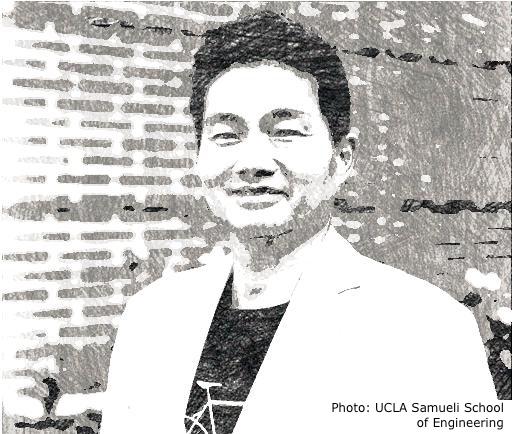Chang-Jin Kim
A tiny, mechanical hand that, when closed, is no larger than a pinhead may have the potential to perform delicate tasks, such as to help physicians perform microsurgeries or to aid robots in defusing bombs. Chang-Jin "CJ" Kim invented the device with the help of Yen-Wen Lu, dubbing it the “Microhand.”
A Korea native, Kim earned a BS degree from Seoul National University before coming to the United States to pursue graduate studies. He completed an MS degree at Iowa State University followed by a PhD in mechanical engineering from the University of California at Berkeley in 1991.
In 1993, he joined the faculty at the University of California, Los Angeles’ (UCLA) Mechanical and Aerospace Engineering Department, where he quickly earned a reputation as an excellent teacher and researcher. Kim, who teaches at UCLA’s Henry Samueli School of Engineering and Applied Science, developed a new PhD program at the university in the field of Micro-Electro-Mechanical Systems, or MEMS. This is the science of building very small devices, including sensors, circuits, and actuators, into single pieces of silicon to produce tiny but durable, reliable systems. Kim also established several new courses in MEMS for UCLA and directs the Micro and Nano Manufacturing Laboratory there. For his efforts, he was recognized with the TRW Outstanding Young Teacher Award in 1995, a National Science Foundation Career Award in 1997, and an ALA Achievement Award in 2003.
Meanwhile, in his free time, Kim began working on a microhand project that takes advantage of the capabilities of MEMS manufacturing in the early 1990s. As MEMS technology advanced, he began to see real potential for the microhand and decided to get serious about it. Working with his doctoral student Yen-Wen Lu, who is now a member of the faculty at Rutgers University, Kim embarked on a three-year project to develop a working model.
Kim and Lu built a dime-thin device less than a millimeter long with four tiny fingers. Miniscule polymer balloons serve as the fingers’ “muscles” while silicon “bones” keep the device’s shape. The fingers are able to open and close while remote operators use air pressure to manipulate them to handle tiny objects.
The pair was challenged to find materials that could handle soft, sometimes wet and slippery materials. They succeeded in doing so, demonstrating their success on sushi, specifically capelin roe, or masago. The hand is able to pull one tiny egg from a cluster of them, handling it delicately and precisely.
The team demonstrated the microhand at Expo 2005 in Aichi, Japan, and in 2007, it was featured on the cover of “Applied Physics Letters,” a prestigious science and engineering journal. Industry and government funding for the project followed.
Kim continues to lead the Micro and Nano Manufacturing Lab with research in the MEMS field.


